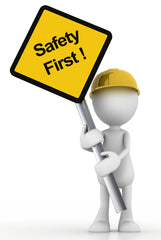Some Things You Need to Know About Battery Technology and Trade Shows

know when you were going to buy a battery was if the cell size was AA, 9 Volt, C or D. As with most things, that is not the case today! Technology continues to expand at rapid levels, and the area of battery technology is no exception.
What do I need to know to determine the size and type of battery I need?
 In the area of using batteries for trade shows, you need to know:
In the area of using batteries for trade shows, you need to know:
- What is being powered by the battery;
- The wattage and voltage draw;
- The desired length of time that you want to have the device operate;
- Is disposable battery technology adequate;
- Alternatively, does the battery need to be rechargeable
- If rechargeable, what are the expectations for the time it will take to recharge;
- The number of times someone intends to recharge the battery pack.
How much will the batteries cost?
Budgets for batteries are also a big factor in selecting batteries. Various technologies carry with them different price tags. Smaller and lighter is often more expensive, so often times, compromises need to be made.
Is the transportation of batteries regulated?
 Once all of this information has been gathered, then the next very important question to be answered is how will the batteries be transported? In this era of regulation, not all type of batteries can be shipped by air!
Once all of this information has been gathered, then the next very important question to be answered is how will the batteries be transported? In this era of regulation, not all type of batteries can be shipped by air!
UPS Lithium Battery Regulations
As a result, if air shipments are involved, then one may turn to another battery technology like nickel metal hydride battery technology as the solution.

What to Remember
One battery solution does not fit every application! Sometimes, batteries are not even the right solution. As with most technologies,  consult with an expert who can properly advise you on battery technology and your choices.
consult with an expert who can properly advise you on battery technology and your choices.

